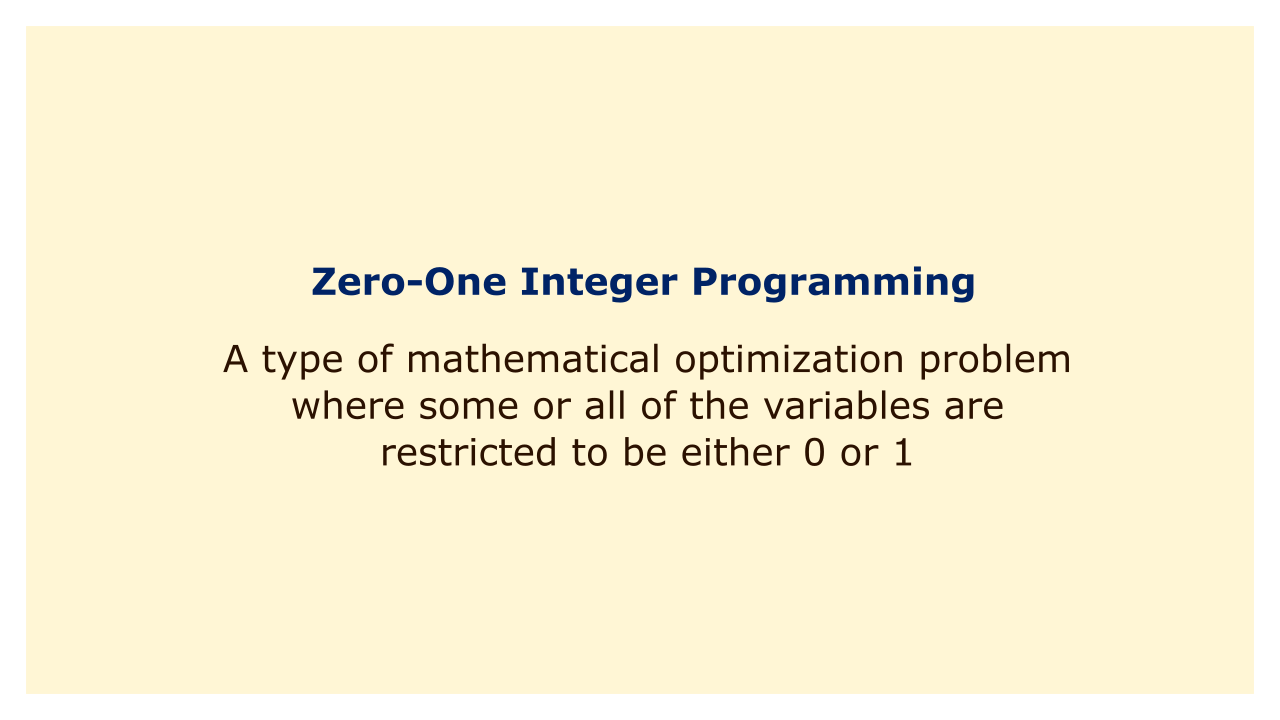 |
| Image: Moneybestpal.com |
Zero-one integer programming is a type of mathematical optimization problem where some or all of the variables are restricted to be either 0 or 1.
Compared to normal integer programming problems, this indicates that the solution space is discrete and finite, making it simpler to solve. Nonetheless, zero-one integer programming issues can still be quite difficult, particularly when they contain a lot of variables and restrictions.
In combinatorial optimization, where the objective is to identify the optimum arrangement of a limited number of components that fulfills a set of requirements, zero-one integer programming is one of the techniques most frequently used. Let's take an example where you want to choose a subset of items from a larger collection while ensuring that their combined value is maximized and their combined weight does not go over a specific threshold. This is known as the knapsack problem, and it can be formulated as a zero-one integer programming problem as follows:
Let x_i be a binary variable that indicates whether item i is selected or not, where i = 1, 2, ..., n.
Let v_i be the value of item i, and w_i be the weight of item i.
Let W be the weight limit of the knapsack.
The objective function is to maximize the total value of the selected items:
maximize sum_{i=1}^n v_i x_i
The constraint is to ensure that the total weight of the selected items does not exceed the weight limit:
sum_{i=1}^n w_i x_i <= W
The binary restriction is to ensure that each item is either selected or not:
x_i in {0, 1} for all i = 1, 2, ..., n
Zero-one integer programming issues can be solved in a variety of ways, including branch and bound, cutting plane, branch and cut, etc. These techniques usually entail removing the binary restriction and solving a linear programming problem, followed by the application of certain rules to remove or refine the solution space until an optimal or nearly optimal solution is discovered.
In combinatorial optimization, where the objective is to identify the optimum arrangement of a limited number of components that fulfills a set of requirements, zero-one integer programming is one of the techniques most frequently used. Let's take an example where you want to choose a subset of items from a larger collection while ensuring that their combined value is maximized and their combined weight does not go over a specific threshold. This is known as the knapsack problem, and it can be formulated as a zero-one integer programming problem as follows:
Let x_i be a binary variable that indicates whether item i is selected or not, where i = 1, 2, ..., n.
Let v_i be the value of item i, and w_i be the weight of item i.
Let W be the weight limit of the knapsack.
The objective function is to maximize the total value of the selected items:
maximize sum_{i=1}^n v_i x_i
The constraint is to ensure that the total weight of the selected items does not exceed the weight limit:
sum_{i=1}^n w_i x_i <= W
The binary restriction is to ensure that each item is either selected or not:
x_i in {0, 1} for all i = 1, 2, ..., n
Zero-one integer programming issues can be solved in a variety of ways, including branch and bound, cutting plane, branch and cut, etc. These techniques usually entail removing the binary restriction and solving a linear programming problem, followed by the application of certain rules to remove or refine the solution space until an optimal or nearly optimal solution is discovered.
